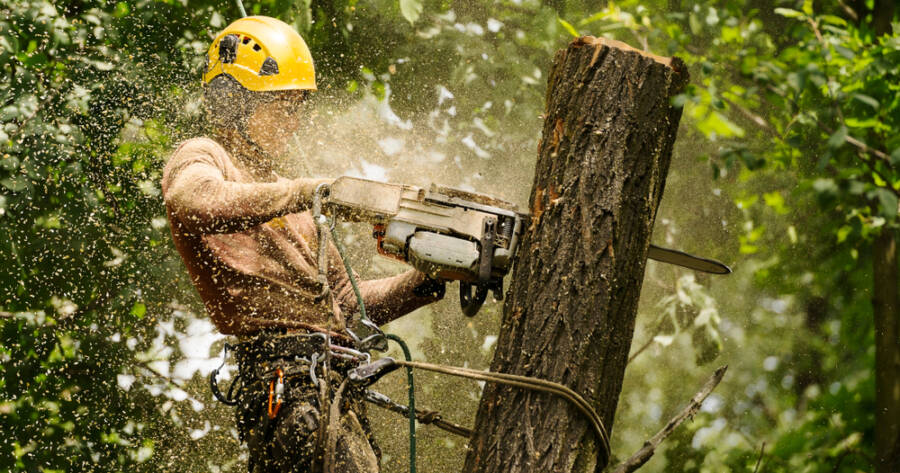A messy yard with overgrown trees can make your outdoor space feel small and uninviting. Dead or damaged trees can even pose safety risks. But with smart tree removal, you can turn a cluttered yard into a peaceful retreat. The right approach opens space, boosts sunlight, and improves your property’s look. Let’s explore when and why you should consider removing trees and how to transform your yard into a beautiful oasis.
Knowing When to Remove a Tree
Not all trees need to go, but some should. If a tree is sick, it may spread disease to nearby plants. Signs of illness include dead branches, peeling bark, or fungus growth at the base. A dying tree can quickly become a hazard, so early removal is often the best choice.
Safety risks are another major reason for tree removal. Large branches hanging over your house or power lines can break during storms, causing serious damage. Trees with weak or exposed roots may also fall, endangering people and property. If a tree leans heavily to one side, it could be a sign that removal is necessary.
In some cases, removing a tree helps the rest of your yard thrive. Overcrowded trees compete for nutrients, which weakens them over time. When too many trees are packed together, they may not grow properly, and their leaves can block sunlight from reaching plants below. If you have a tree that casts too much shade, you may struggle to grow grass or flowers. Removing it allows more natural light, giving your yard a fresh, open feel.
Planning for Tree Removal
Before cutting down a tree, it’s important to have a plan. First, check if your area requires a permit. Some cities have rules about tree removal, especially for older or protected species. Hiring a professional arborist can help you avoid mistakes and ensure safe removal. They can also advise you on whether a tree should be removed or simply pruned.
Think about what you want to do with the space once the tree is gone. Will you plant new greenery, build a patio, or create a garden? Planning ahead will help you make the most of your yard’s new potential. Stump removal is another factor to consider. Leaving a stump can attract pests or create an obstacle for landscaping. Grinding it down or removing it completely will give you a clean slate for future projects.
Transforming Your Yard After Tree Removal
Once the tree is gone, you can start designing your outdoor oasis. If the area looks bare, planting new trees or shrubs can add balance. Choose plants that complement your space without growing too large. Native plants often require less maintenance and provide a natural look.
Adding a patio, walkway, or seating area can also enhance your yard. With more sunlight, you may have the perfect spot for a garden. Raised flower beds or a small vegetable patch can bring color and life to your outdoor space. If you prefer a low-maintenance option, decorative gravel, mulch, or stone features can give your yard a polished appearance.
Grass may take time to regrow in shaded areas that are now exposed to sunlight. Reseeding or laying fresh sod can speed up the process. Watering and fertilizing will help the grass establish itself quickly. Over time, the open space will blend naturally with the rest of your yard, creating a seamless transition.
Maintaining a Healthy, Beautiful Yard
Regular care keeps your yard looking its best after tree removal. Trim remaining trees to prevent them from becoming overgrown. Removing weak branches early can stop future problems before they start. Keeping an eye on tree roots will also help, as some species send up unwanted shoots that can crowd your yard.
If you plant new trees, give them enough space to grow. Choose locations where they won’t block sunlight or interfere with power lines. Watering and mulching around the base will encourage strong roots. Over time, these small steps will ensure that your yard stays inviting and well-maintained.
Improve Your Outdoor View
Strategic tree removal can turn a crowded or unsafe yard into a peaceful retreat. Removing dead, dangerous, or poorly placed trees opens space for new possibilities. With proper planning, you can transform your outdoor area into a place you enjoy.
Whether you choose to plant new greenery, install a patio, or create a garden, the right approach will help you reclaim your yard and make the most of your space.

